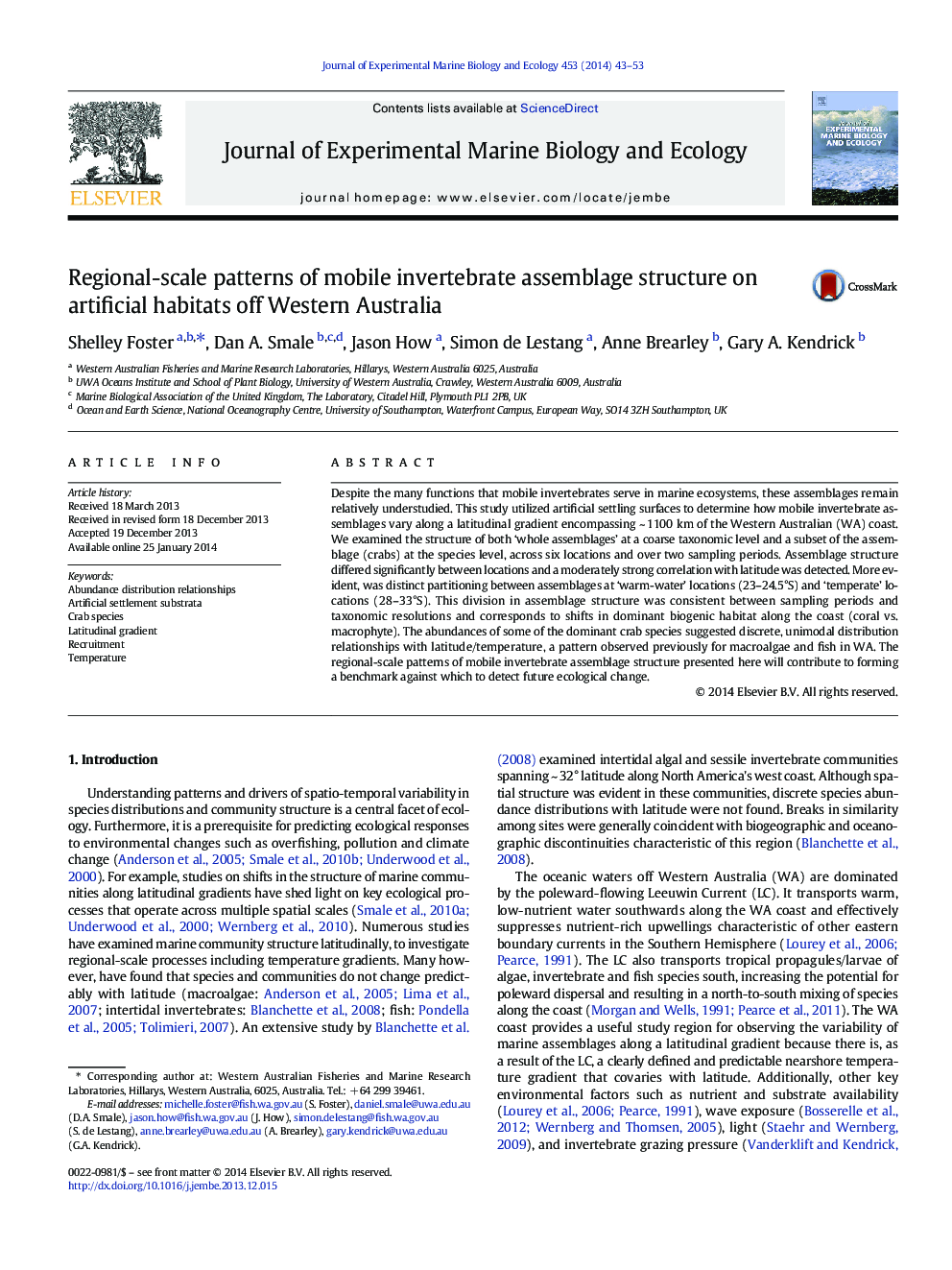| Article ID | Journal | Published Year | Pages | File Type |
|---|---|---|---|---|
| 4395573 | Journal of Experimental Marine Biology and Ecology | 2014 | 11 Pages |
•Mobile invertebrates colonizing artificial ‘macrophyte’ habitats were quantified.•Assemblage structure shifted along a regional-scale latitude/temperature gradient.•Assemblages at the 2 northern locations were distinct from the 4 southern locations.•Dissimilarity was driven by higher numbers of small crustaceans at southern locations.•Likely causes of regional-scale variability in assemblage structure are examined.
Despite the many functions that mobile invertebrates serve in marine ecosystems, these assemblages remain relatively understudied. This study utilized artificial settling surfaces to determine how mobile invertebrate assemblages vary along a latitudinal gradient encompassing ~ 1100 km of the Western Australian (WA) coast. We examined the structure of both ‘whole assemblages’ at a coarse taxonomic level and a subset of the assemblage (crabs) at the species level, across six locations and over two sampling periods. Assemblage structure differed significantly between locations and a moderately strong correlation with latitude was detected. More evident, was distinct partitioning between assemblages at ‘warm-water’ locations (23–24.5°S) and ‘temperate’ locations (28–33°S). This division in assemblage structure was consistent between sampling periods and taxonomic resolutions and corresponds to shifts in dominant biogenic habitat along the coast (coral vs. macrophyte). The abundances of some of the dominant crab species suggested discrete, unimodal distribution relationships with latitude/temperature, a pattern observed previously for macroalgae and fish in WA. The regional-scale patterns of mobile invertebrate assemblage structure presented here will contribute to forming a benchmark against which to detect future ecological change.
